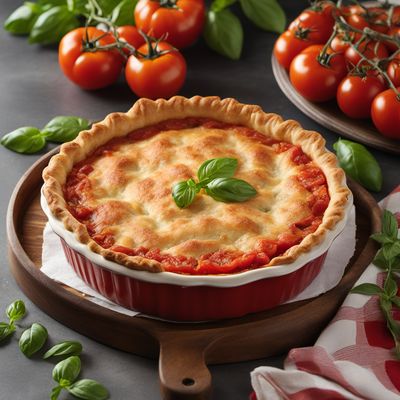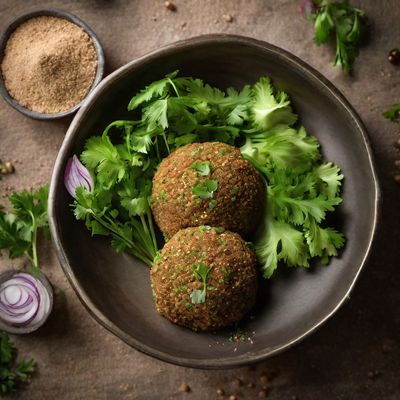
Recipe
Molecular Gastronomy Rice and Gravy
Savory Rice Spheres with Velvety Gravy Emulsion
4.3 out of 5
Experience the avant-garde side of molecular gastronomy with this innovative twist on the classic American dish, Rice and Gravy. Using cutting-edge techniques and ingredients, we transform humble rice and gravy into a visually stunning and gastronomically delightful creation.
Metadata
Preparation time
45 minutes
Cooking time
20 minutes
Total time
65 minutes
Yields
4 servings
Preparation difficulty
Medium
Suitable for
Vegetarian, Vegan (if using vegetable broth and vegan gravy), Gluten-free, Dairy-free, Low-fat
Allergens
N/A
Not suitable for
Paleo, Keto, Low-carb, Nut-free, Soy-free
Ingredients
In the original American cuisine, Rice and Gravy is typically prepared by cooking rice in water or broth and serving it with a thick, savory gravy made from meat drippings. In this molecular gastronomy adaptation, we transform the dish by using spherification to create rice spheres and creating a gravy emulsion using hydrocolloids. The presentation and texture of the dish are completely different, offering a unique and innovative dining experience. We alse have the original recipe for Rice and Gravy, so you can check it out.
-
200g (1 cup) Arborio rice 200g (1 cup) Arborio rice
-
500ml (2 cups) vegetable broth 500ml (2 cups) vegetable broth
-
5g (1 tsp) sodium alginate 5g (1 tsp) sodium alginate
-
500ml (2 cups) water 500ml (2 cups) water
-
2g (1/2 tsp) calcium lactate 2g (1/2 tsp) calcium lactate
-
200ml (3/4 cup) gravy 200ml (3/4 cup) gravy
-
2g (1/2 tsp) xanthan gum 2g (1/2 tsp) xanthan gum
-
Salt and pepper to taste Salt and pepper to taste
Nutrition
- Calories (kcal / KJ): 250 kcal / 1046 KJ
- Fat (total, saturated): 3g, 0.5g
- Carbohydrates (total, sugars): 50g, 2g
- Protein: 5g
- Fiber: 2g
- Salt: 1g
Preparation
-
1.Cook the Arborio rice in vegetable broth until tender. Drain and set aside.
-
2.In a bowl, dissolve sodium alginate in water and blend until smooth.
-
3.In a separate bowl, dissolve calcium lactate in water and blend until smooth.
-
4.Using a spoon or a dropper, drop small portions of the cooked rice into the sodium alginate solution. Let it sit for 2 minutes to form a gel-like membrane around the rice.
-
5.Carefully transfer the rice spheres into the calcium lactate solution and let them sit for another 2 minutes to complete the spherification process.
-
6.Remove the rice spheres from the calcium lactate solution and rinse them gently with water.
-
7.In a blender, combine the gravy and xanthan gum. Blend until the mixture thickens and becomes smooth.
-
8.Season the gravy with salt and pepper to taste.
-
9.To serve, place the rice spheres in a bowl or plate and pour the gravy emulsion over them.
Treat your ingredients with care...
- Arborio rice — Use Arborio rice for its high starch content, which helps in creating the desired texture for the rice spheres.
- Sodium alginate — Ensure that the sodium alginate is fully dissolved in water to achieve a smooth and consistent gel-like membrane around the rice.
- Calcium lactate — Dissolve the calcium lactate completely to ensure proper spherification of the rice spheres.
- Xanthan gum — Blend the gravy and xanthan gum thoroughly to achieve a thick and smooth emulsion.
- Gravy — Use a flavorful and well-seasoned gravy to enhance the overall taste of the dish.
Tips & Tricks
- Experiment with different types of rice for unique textures and flavors.
- Add herbs or spices to the rice spheres for additional complexity.
- Use a syringe or pipette for more precise placement of the rice spheres.
- Garnish with fresh herbs or microgreens for an elegant touch.
- Serve the dish immediately after assembling to maintain the desired texture of the rice spheres.
Serving advice
Serve the Molecular Gastronomy Rice and Gravy as a main course, accompanied by a side of fresh salad or steamed vegetables. The dish is best enjoyed when the rice spheres are still warm and the gravy emulsion is velvety and smooth.
Presentation advice
For an eye-catching presentation, arrange the rice spheres in a circular pattern on the plate and drizzle the gravy emulsion over them. Garnish with a sprig of fresh herbs or a sprinkle of paprika for a pop of color.
More recipes...
More American cuisine dishes » Browse all

Chicken Fried Bacon
American Fried Bacon
Chicken Fried Bacon is a Southern dish that is crispy, salty, and delicious. It is a perfect appetizer or snack for any occasion.

Blueberry Cobbler
Blueberry cobbler is a delicious and fruity dessert that is perfect for any occasion. It is made with fresh blueberries and a sweet biscuit...

Tomato Pie
Tomato pie is a savory pie made with ripe tomatoes, cheese, and herbs. It is a popular dish in the Southern United States.








